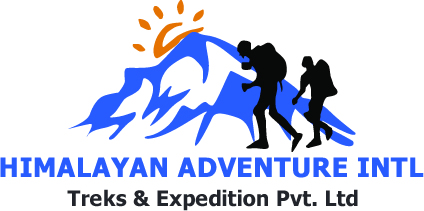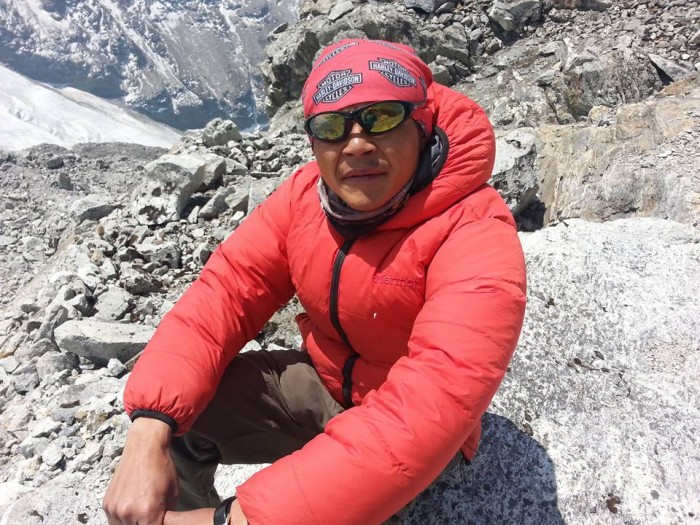The Lhasa via Everest Base Camp Trek, also known as the Everest Advanced Base Camp Trek, is an awe-inspiring journey through the heart of the Tibetan Plateau, where ancient Buddhist culture, dramatic Himalayan landscapes, and the towering majesty of Mount Everest come together in an unforgettable adventure. This trek is more than just a climb — it's a cultural, spiritual, and high-altitude experience that stands among the world’s most iconic expeditions.
Whether you’re drawn by the mystique of Tibetan monasteries or the challenge of reaching high-altitude destinations, this trek offers a comprehensive encounter with nature and tradition, culminating at the Advanced Base Camp Everest altitude of 6,340 meters (20,800 feet). Join Himalayan Adventure International Treks for a once-in-a-lifetime opportunity that combines the best of Tibet Everest Base Camp tours with stunning Himalayan panoramas.
Introduction to the Trek
The Lhasa to Everest Base Camp journey traces a historic route used by climbers and pilgrims alike. Starting in Lhasa, Tibet’s spiritual and cultural capital, the route ventures through historic sites like Potala Palace and Jokhang Temple before heading towards Everest Base Camp (EBC) and eventually Advanced Base Camp (ABC) in the northern face of Mount Everest.
This route is uniquely Tibetan, offering a rare glimpse of Mount Everest from the north — a perspective far less crowded and equally (if not more) scenic than the Nepalese side.
Key Distances and Elevations
Understanding the distances and altitudes is essential for preparation:
-
Lhasa to Everest Base Camp distance: Approximately 700 kilometers by road via Gyantse and Shigatse.
-
Tibet to Everest Base Camp distance: Roughly 350 km from Shigatse.
-
Tibet to Mount Everest distance: From Lhasa to Everest Base Camp, it's around 700 km, while Everest Advanced Base Camp is located about 22 km further on foot from EBC.
-
Advanced Base Camp Everest altitude: 6,340 meters (20,800 feet)
-
Everest Camp 2 (South side in Nepal): 6,400 meters, for comparison.
Everest Base Camp vs Advanced Base Camp: What’s the Difference?
One of the most commonly asked questions is, "Everest Base Camp vs Advanced Base Camp — what’s the difference?"
-
Everest Base Camp (North): Located at 5,150 meters, it’s accessible by vehicle and is a popular destination for trekkers seeking high-altitude experience without extreme exertion. You can visit the base camp as part of a Tibet Everest Base Camp tour without the need for mountaineering permits.
-
Everest Advanced Base Camp: This is a challenging trek beyond the main base camp, involving glacier travel and higher altitude trekking. Reaching ABC means stepping into the world of true expedition climbing. You'll require a higher level of fitness and acclimatization, but the reward is unparalleled views of Everest's formidable north face.
Kathmandu to Lhasa Tour – Gateway to Tibet
Most international travelers begin their journey from Kathmandu, Nepal. Himalayan Adventure International Treks offers a seamless Kathmandu to Lhasa tour, either via direct flight or the scenic overland route through the Kerung border.
-
By Air: Kathmandu to Lhasa flights offer breathtaking views of the Himalayas, including Everest, Makalu, and Lhotse.
-
By Road: For those with more time, the overland journey from Kathmandu to Lhasa through the Friendship Highway is one of the most scenic drives in Asia.
Whichever route you choose, our team arranges all logistics, permits, transportation, and guides.
Detailed Itinerary: Lhasa to Everest Advanced Base Camp Trek
Day 01: Arrival in Lhasa (3,650m)
Fly into Lhasa and transfer to your hotel. Begin the acclimatization process and explore Barkhor Street.
Day 02–03: Sightseeing in Lhasa
Visit Potala Palace, Jokhang Temple, Sera and Drepung Monasteries. Soak in Tibetan history and prepare for the journey ahead.
Day 04: Drive to Gyantse (3,950m)
Pass through Yamdrok Lake and the Karo La Glacier before arriving in Gyantse, home to the Pelkor Chode Monastery.
Day 05: Drive to Shigatse (3,900m)
Visit the Tashilhunpo Monastery, the seat of the Panchen Lama.
Day 06: Drive to Rongbuk Monastery (5,000m)
Continue through Tingri and reach the foot of Everest at Rongbuk — the highest monastery in the world.
Day 07: Trek to Everest Base Camp (5,150m)
Begin the Tibet to Everest Base Camp trek. Enjoy stunning views of Everest's North Face. Spend the night at a tented camp or guesthouse.
Day 08–09: Acclimatization and Trek to Interim Camp (5,800m)
A challenging walk through moraine fields. The air is thinner here; slow and steady wins the race.
Day 10: Trek to Advanced Base Camp (6,340m)
A strenuous yet rewarding day. Standing at Advanced Base Camp Everest altitude, this is the closest non-climbers can get to the summit without mountaineering equipment.
Day 11: Return to Base Camp and Drive to Shigatse
Day 12: Drive to Lhasa
Day 13: Departure
Can I See Everest from Lhasa?
Many travelers wonder, "Can I see Everest from Lhasa?" While Mount Everest isn’t visible from the city itself due to mountain ranges in between, once you start the overland journey toward Tingri and Rongbuk, you'll be rewarded with spectacular vistas of Everest and other Himalayan giants.
How Do I Go from Lhasa to Everest Base Camp?
To answer the frequent query, "How do I go from Lhasa to Everest Base Camp?" — it involves an overland drive on a well-maintained route followed by a short trek. Travelers require a Tibet Travel Permit, Alien Travel Permit, and a guide — all of which Himalayan Adventure International Treks arranges as part of our packages.
We take care of every logistical and bureaucratic step, so you only focus on the adventure.
How Do I Go to Everest Base Camp from Tibet?
Here is a simple breakdown:
-
Start in Lhasa (by flight or overland).
-
Travel to Shigatse via Gyantse.
-
Continue to Rongbuk Monastery.
-
Trek or drive to Everest Base Camp (North).
-
Optionally, trek to Advanced Base Camp for the ultimate experience.
How Much Does a Trek to Everest Base Camp Cost?
Another popular question: "How much does a trek to Everest Base Camp cost?"
With Himalayan Adventure International Treks, the cost varies depending on group size, services, and whether you include Advanced Base Camp:
-
Standard Tibet Everest Base Camp Tour: USD $2,500–$3,200
-
Everest Advanced Base Camp Trek: USD $4,500–$6,000
-
Private Luxury Tours: Available on request.
These prices include permits, transportation, accommodation, guide services, meals during the trek, and oxygen cylinders (for ABC trekkers).
How Much Money Do I Need to Go to Everest Base Camp?
Besides tour costs, budget an additional:
-
$200–$300 for tips and incidental costs.
-
$100–$150 for meals/snacks not covered.
-
$100–$200 for optional gear, SIM cards, or souvenirs.
So, in total, budget $2,700 to $6,500 depending on your tour type and additional expenses.
How Difficult Is the Trek to Everest Base Camp?
While the Tibet to Everest Base Camp segment is accessible by road and suitable for most travelers, the trek to Advanced Base Camp is challenging. Factors to consider:
-
High Altitude: Reaching 6,340m at ABC, risk of altitude sickness is real.
-
Fitness Level: Moderate to high fitness is required.
-
Cold Weather: Especially during shoulder seasons (April–May and Sept–Oct).
-
Accommodation: Basic guesthouses and tents beyond Shigatse.
Our guided expeditions include acclimatization support, oxygen backups, and experienced high-altitude guides to ensure your safety.
How Much Does It Cost to Fly to Everest Base Camp?
Flights do not land at Everest Base Camp — but people often ask, "How much does it cost to fly to Everest Base Camp?" You can take a mountain flight from Lhasa or Kathmandu to view Everest from the sky, which costs around $200–$300. Helicopter flights are not available on the Tibetan side due to Chinese regulations, unlike in Nepal.
Why Choose Himalayan Adventure International Treks?
With years of experience in both Nepal and Tibet, Himalayan Adventure International Treks is uniquely positioned to offer a seamless, safe, and culturally rich journey. Our services include:
-
All permit arrangements (Tibet Travel Permit, Alien Travel Permit)
-
High-altitude trained guides
-
Emergency support and oxygen cylinders
-
Sustainable tourism practices
-
Customizable itineraries for solo or group travelers
Best Time to Go
The ideal seasons are:
Winter and monsoon seasons are not recommended due to road closures and poor visibility.
The Everest Advanced Base Camp Trek from Lhasa is a profound journey that challenges the body and uplifts the soul. From majestic monasteries to the wild, windswept plains of the Tibetan Plateau, and finally to the foot of the world’s tallest mountain, this route offers a complete Himalayan experience like no other.
Whether you’re drawn to the question of "How do I go from Lhasa to Everest Base Camp?" or wondering, "How much money do I need to go to Everest Base Camp?", we hope this guide has provided clarity.
Let Himalayan Adventure International Treks be your guide to the roof of the world. Contact us today to start planning your Lhasa to Everest Base Camp adventure!

 Plan Your Trip Now
Plan Your Trip Now 


